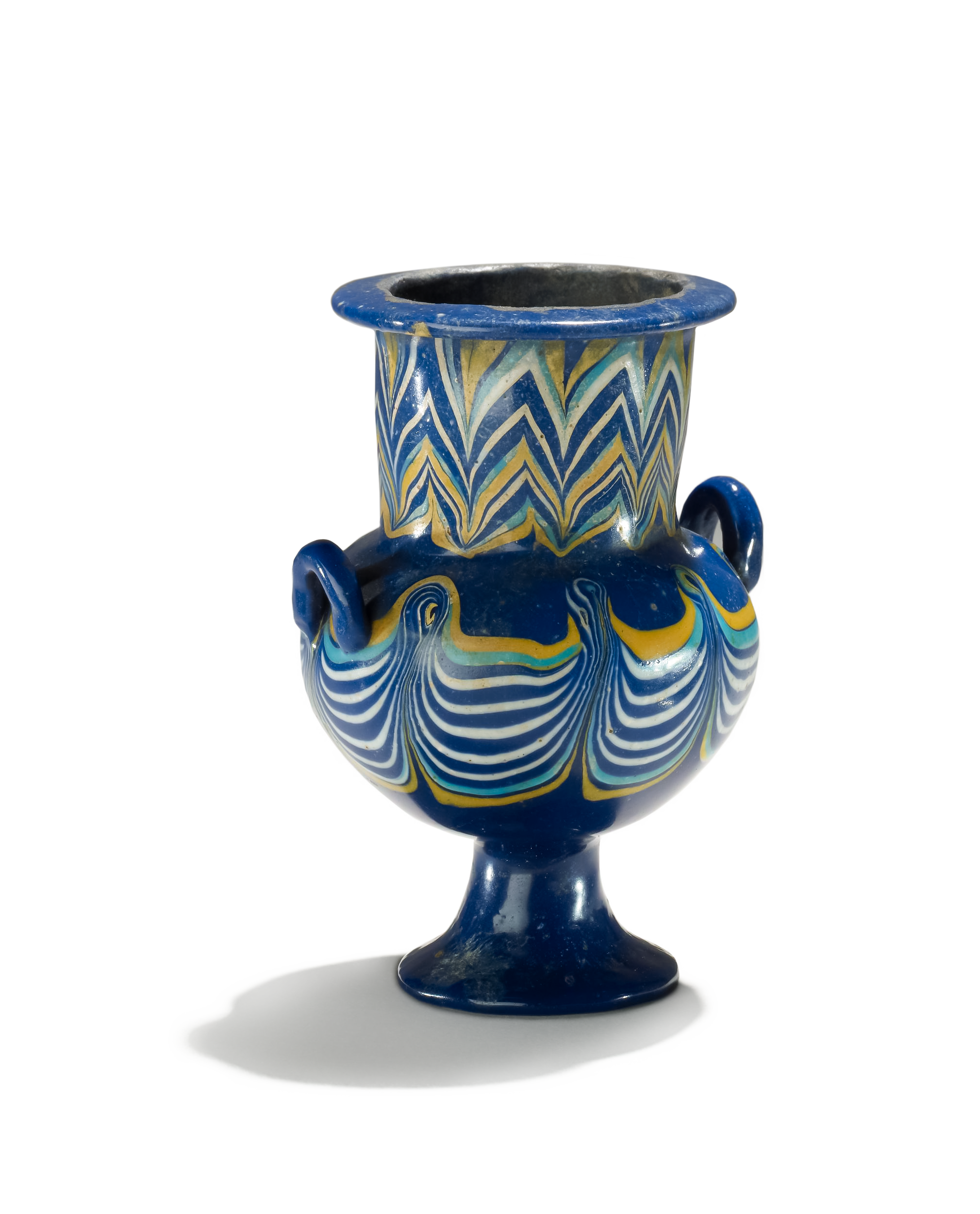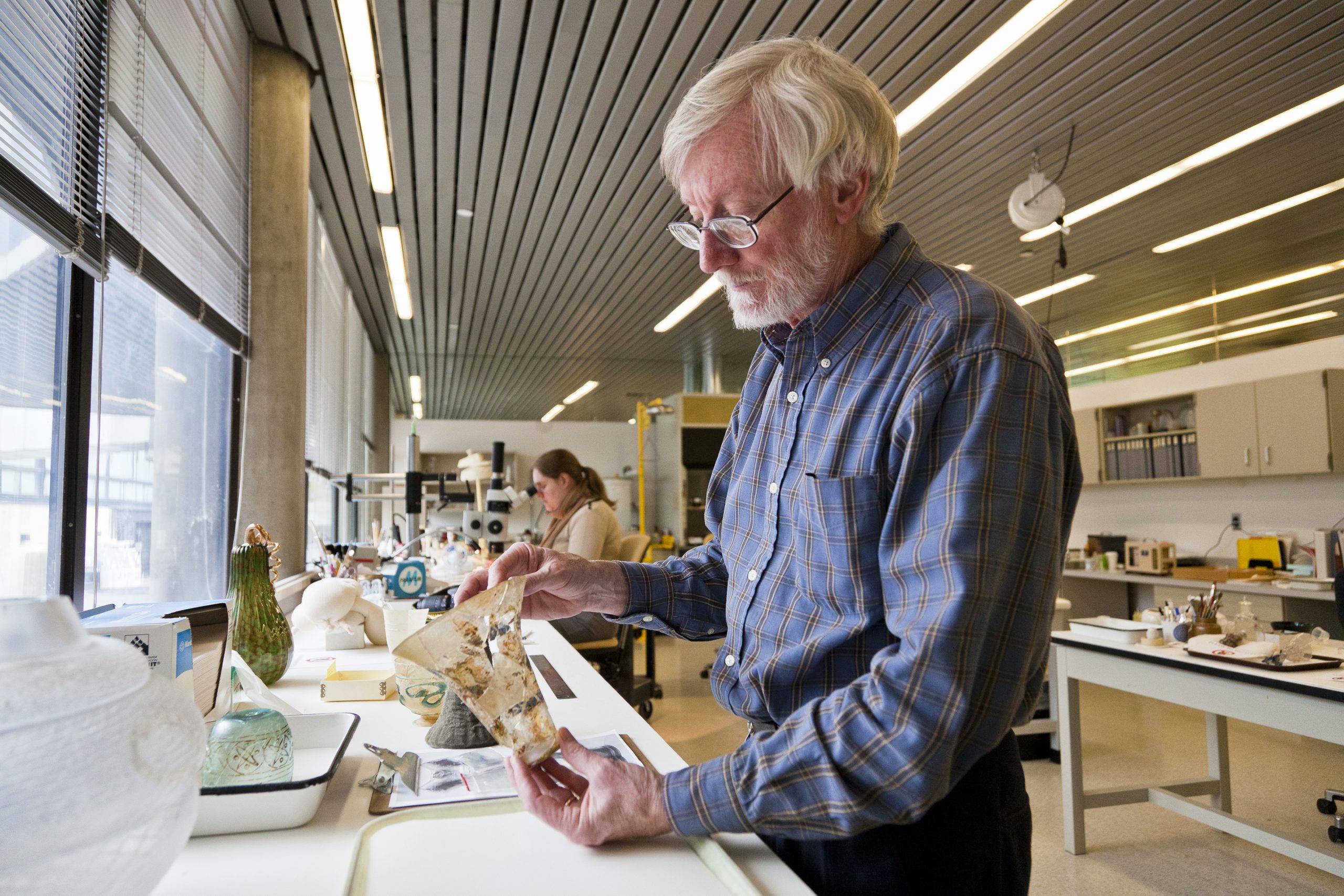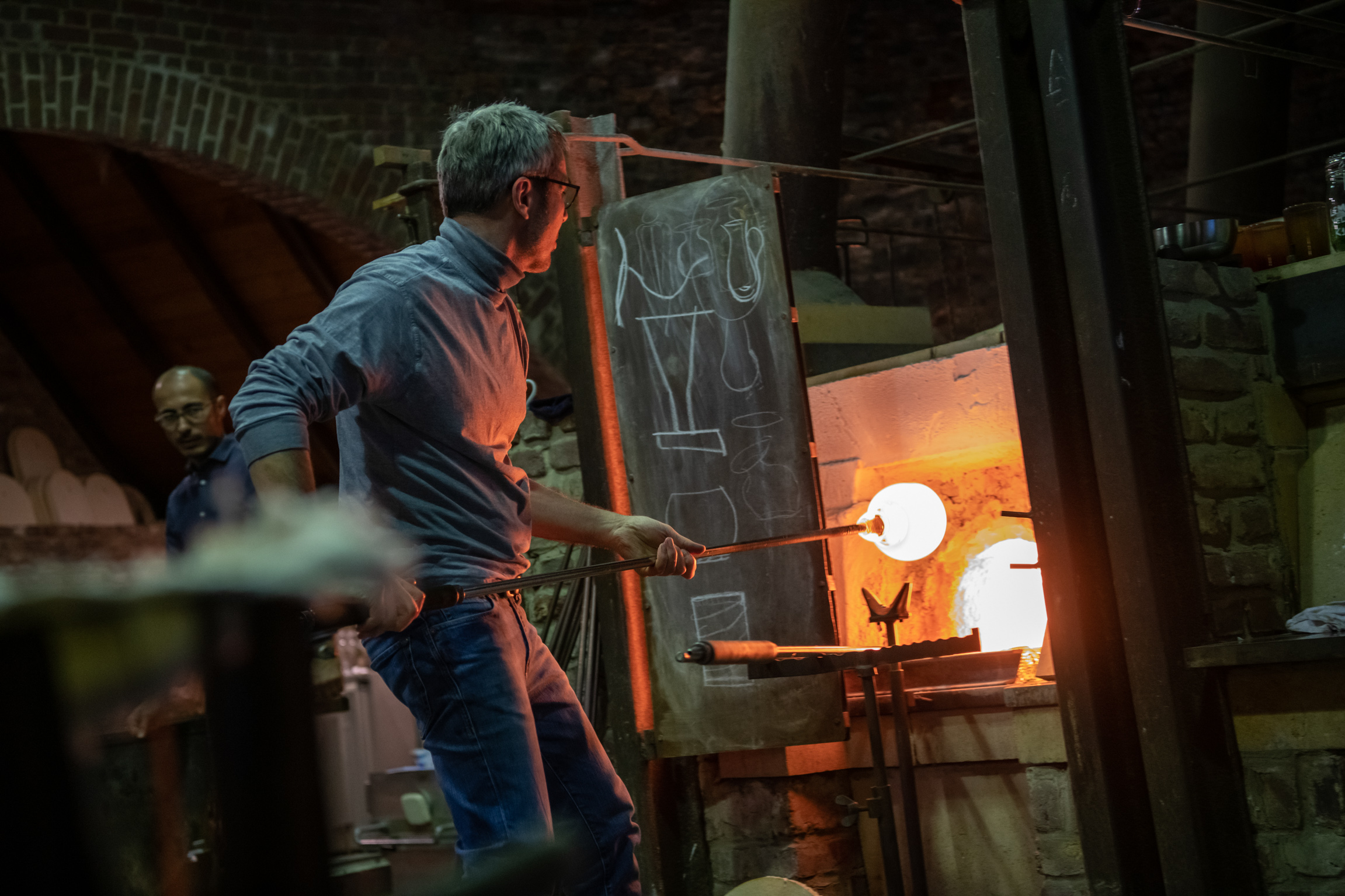Explore the exhibition




Glass in museums
Glass in museums
Educational activities at the Museo Tecnológico del Vidrio (Segovia, Spain). Fundación Centro Nacional del Vidrio
Glass objects are commonly found in all types of museums, in the form of tableware, glasses, dishes, windows, personal ornaments, optical instruments, works of art or scientific devices. Thanks to this, these spaces and their glass collections help to preserve a legacy that peoples and communities regard as important.
In this task, conservation is a main responsibility because it greatly contributes to our understanding of the materials used and of the mechanisms behind their deterioration. Specifically, museum libraries and archives are invaluable resources for making research on glass accessible to scholars and to the general public.
Two-handled Egyptian cosmetic jar with wide neck, core-formed, vessel from 1390 B.C - 1352 B.C. It combines opaque dark-blue glass with chevron decorations in other colours. The Trustees of the British Museum (CC BY-NC-SA 4.0)


Stephen Koob and Astrid van Giffen in the conservation laboratory at The Corning Museum of Glass. Greg Hodges

Magical experiences
Glass can be used as a medium to attract and actively engage the public in every type of museum. There are plenty of stories to tell about its origin and manufacture, the raw materials and techniques that have been used to produce glass through the centuries and about the life of the people who created and used it. Glass museums equipped with hot and cold workshops and studios can provide magical experiences for visitors and unique opportunities for creative learning.
Glass objects are commonly found in all types of museums, in the form of tableware, glasses, dishes, windows, personal ornaments, optical instruments, works of art or scientific devices. Thanks to this, these spaces and their glass collections help to preserve a legacy that peoples and communities regard as important.
In this task, conservation is a main responsibility because it greatly contributes to our understanding of the materials used and of the mechanisms behind their deterioration. Specifically, museum libraries and archives are invaluable resources for making research on glass accessible to scholars and to the general public.
Two-handled Egyptian cosmetic jar with wide neck, core-formed, vessel from 1390 B.C - 1352 B.C. It combines opaque dark-blue glass with chevron decorations in other colours. The Trustees of the British Museum (CC BY-NC-SA 4.0)


Educational activities at the Museo Tecnológico del Vidrio (Segovia, Spain). Fundación Centro Nacional del Vidrio

Magical experiences
Glass can be used as a medium to attract and actively engage the public in every type of museum. There are plenty of stories to tell about its origin and manufacture, the raw materials and techniques that have been used to produce glass through the centuries and about the life of the people who created and used it. Glass museums equipped with hot and cold workshops and studios can provide magical experiences for visitors and unique opportunities for creative learning.



